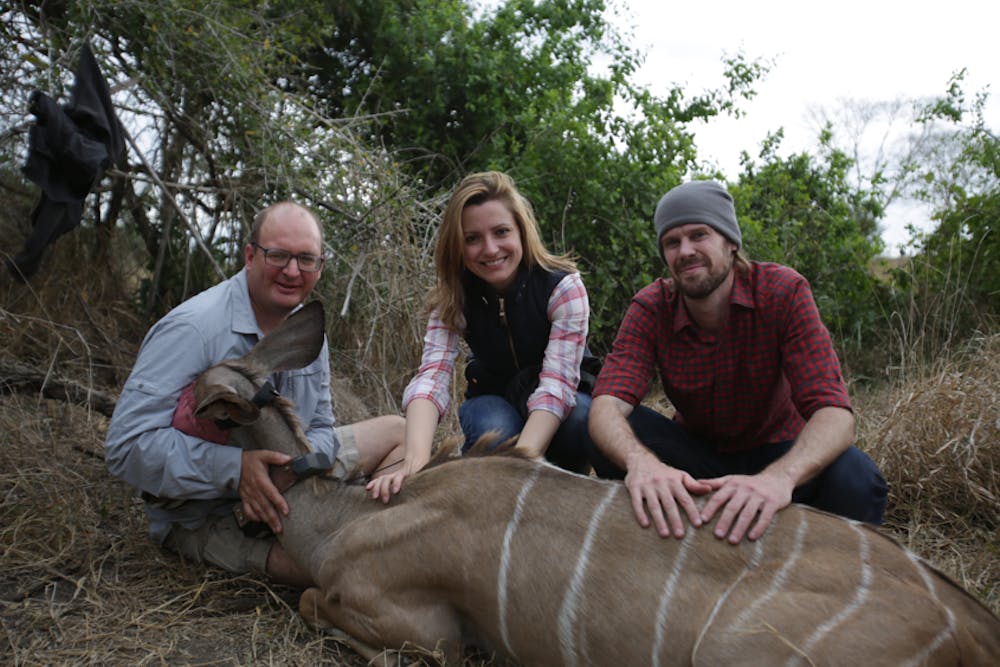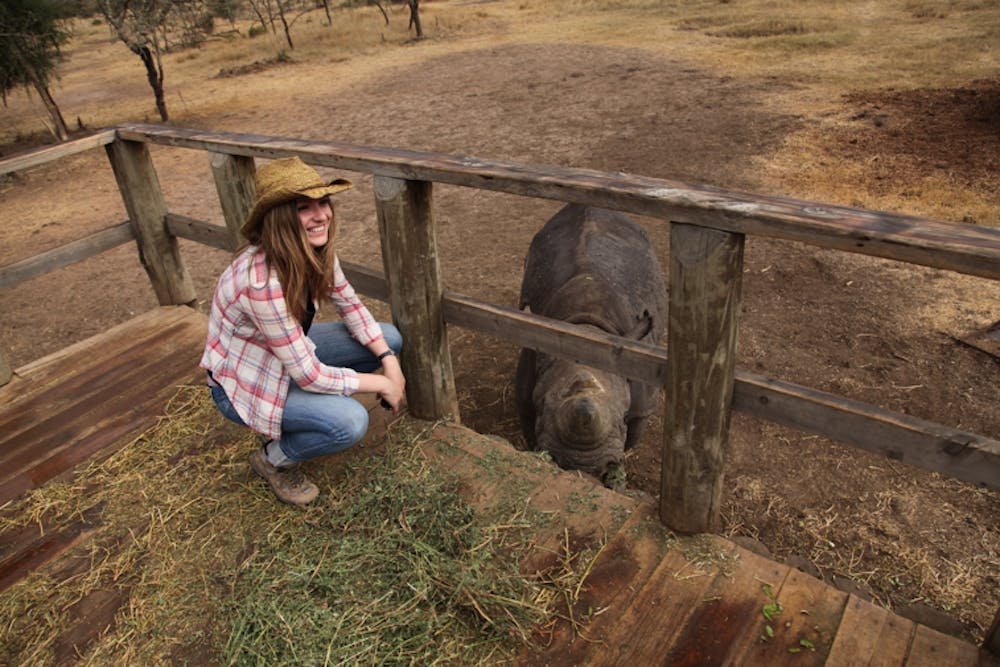Dr. Corina Tarnita is a professor and mathematical biologist in the Department of Ecology and Evolutionary Biology. I was fortunate enough to have her last fall as my professor for the freshman seminar FRS 191: The Equations of Life. I recently met with her to ask some questions about her background and career.
Daily Princetonian: How would you define mathematical biology?
Corina Tarnita: I would say it’s the use of mathematical tools to explore questions in biology. In my work, I use relatively simple models to try to get at the principles of biological organization.
DP: How did you end up as a mathematical biologist?
CT: I was a math undergrad and then I started my Ph.D. at Harvard in pure math, but at some point I started to feel less happy doing math. I worked in a field that I loved and thought was ideal for me: algebraic geometry. But at some point during my first year of grad school, the problems started to feel so abstract that I felt like I had no intuition about them anymore. My adviser thought I was burnt out, so he advised me to go to the math library and pick out a book that didn’t have to do with any of the math I had done so far. I happened to pick this one book with a colorful cover and the title “Evolutionary Dynamics: The Equations of Life.” It was an amazing book; I couldn’t put it down. Then I realized that the guy who wrote it was a professor at Harvard, and I went to do a project with him for six months. I enjoyed working on the project, but I kept wondering, “Is this fun just because it’s a break and it’s about learning a new use for math, or is it the thing that I’m going to be passionate about forever?” Towards the end of the six months, I started to realize that I was waking up every morning excited to ask questions in this new field. I realized this was it; I switched fields and never looked back.
DP: How did you end up at Princeton?
CT: In 2009 I started to work with the naturalist E. O. Wilson on a model to explain the evolution of the complex social behavior seen in ants, known as eusociality. It was the first time that I had interacted closely with an empirical biologist, and the extraordinary stories he was telling made me realize that I really wanted to be a biologist. At around the same time I met Rob Pringle, now my colleague in EEB at Princeton. We started to work on a model of species interactions inspired by his work in Africa, but he felt that the questions I kept asking him were too abstract and would never have come up had I actually known the system. So he and I went to Kenya to see the system first hand, and that was an extraordinary and life-changing experience. I immediately felt an incredible connection with this beautiful place and an urge to understand it. A year later, as my fellowship at Harvard was winding down and I was trying to decide what kind of departments I should apply to, I met my now-colleague Simon Levin at a conference. Knowing that he also had a Ph.D. in math but was a theoretical ecologist, I asked him how to make the decision. His answer was a question: “What kind of scientists would you like to interact with every day?” I suddenly felt clarity that it was biologists, because hearing about their work and their systems had always been the biggest source of creativity for me. He then said, “Well, since that’s the answer, you should know that we’re advertising an open position at Princeton; why don’t you apply for it?” So I applied, and that’s how I got here.

[Tarnita with an antelope in Mozambique; Photo by Dennis Liu]
DP: What courses do you teach?
CT: When I got to Princeton, I wanted to design a course to which I could bring my mathematical perspective but without assuming a priori that the students would simply take for granted that math is a useful approach to biology. So the point of the course [EEB 325] — which subsequently inspired a freshman seminar [FRS 191] — was basically to provide a sampler of problems across fields from evolution to ecology to behavior and disease, where modeling has been a useful tool. The course had three goals: first, to provide the motivation for why math can be useful in biology; second, to give students a sense of how to pose a question for which a mathematical model might be useful; and third, to give them the tools to construct and analyze some basic models. I love teaching in general, but I enjoyed teaching the freshman seminar the most: the small group, the very diverse backgrounds and interests, and the completely uninhibited and playful creativity of freshmen made for a very fun and rewarding teaching experience. Getting to know every single student and their interests made teaching feel much more organic; I could tailor the bulk of my examples based on their questions and reactions.

DP: What are you working on at the moment?
CT: One of the projects that I’m finalizing right now goes back to my first encounter with E. O. Wilson. Back then, we predicted that the only way for eusociality to evolve was if some social benefits would already arise in very small groups. At the time it was hard to test this idea, but recent advances in tracking technology are making it possible. Together with collaborators at Rockefeller University, my graduate student Chris Tokita and I are looking at a very simple ant species, which allows us to study really small groups and track every single ant. We’re finding that cooperatives of six to seven ants are sufficient to yield a significant boost in their fitness. So, nine years later, it seems that we might have a nice confirmation of our original theoretical predictions.
DP: What do you love most about Princeton?
CT: Aside from the fantastic students and colleagues, one of the things I love most about Princeton is the ease with which intra- and interdepartmental connections and collaborations can form. I’m endlessly amazed at how collaborative and interdisciplinary everyone is here and how well-structured the University is to allow and foster such interdisciplinary collaboration. That’s the ideal environment for someone like me.
Dr. Tarnita is a testament to the fact that times of academic frustration can be dramatically beneficial towards finding a true passion or career path. Princeton is lucky to have this brilliant and energetic faculty member and I’m excited to see what she will achieve in the future.

[Tarnita with a rhino in Kenya; Photo by Rob Pringle]




